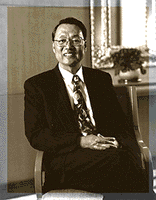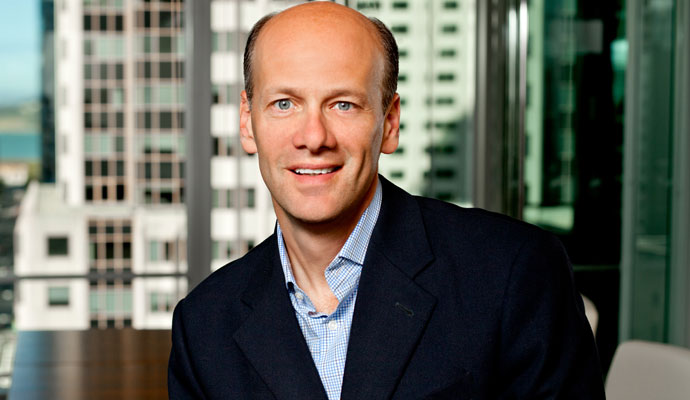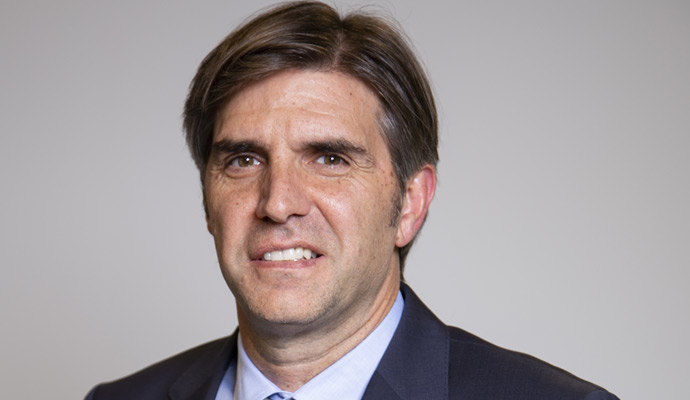The 'Fast-Food' Computer Company: An Interview with Stan Shih
In Taiwan, where business anonymity is the cultural norm, Stan Shih stands out.
(originally published by Booz & Company)
Stan Shih is the founder and chairman of the $5.8 billion Acer Group and Taiwan's most visible business leader. In a wide-ranging discussion, he describes the strategy he used to build Acer from a tiny chip distributor into one of the world's five largest manufacturers of PC's, components and peripherals. His 20-year effort to make Acer a global brand name has not been easy, given Taiwan's cultural propensity for business anonymity, but Mr. Shih is outspoken and aggressive and quite the antithesis of his Taiwanese counterparts.
Employing a strategy he calls "global brand, local touch," Mr. Shih has turned Acer into a decentralized conglomerate of autonomous businesses by selling off majority stakes to local investors in more than 20 countries. This structure effectively makes these businesses Acer's clients, yet insures they look to Taiwan for vision, guidelines and strategy.
These relationships are underpinned by what Mr. Shih calls his "fast-food model," under which each local business assembles computers from components manufactured in Taiwan. With 39 assembly lines now operating in 35 countries, Acer's approach not only provides its global network with up-to-date products but also accelerates the speed of new-product introductions and the inventory turnover rate.
Looked at from the standpoint of Acer's reputation and image, it is this central strategic and technological function that "gives us our global identity and direction," Mr. Shih says. Acer is now the No. 1 PC maker in Indonesia, Malaysia, Mexico, South Africa and other emerging markets.
Mr. Shih is undaunted by Acer's current problems with PC's, where its growth has stagnated, and with semiconductors, where prices have fallen. He still firmly believes that his goal of becoming a $15 billion internationally renowned technology giant by the year 2000 is well within reach.
In Taiwan, where business anonymity is the cultural norm, Stan Shih stands out.
Name recognition is anathema in Taiwan, which built its massive computer industry by manufacturing systems for technology giants from the United States, Japan and Europe. Yet Mr. Shih, founder and chairman of the $5.8 billion Acer Group, has spent the past 20 years fighting to make Acer a global brand name, as recognizable in computers as Fujitsu, I.B.M., N.E.C. or Hewlett-Packard. Indeed, the 51-year-old Mr. Shih, an urbane engineer and entrepreneur, has long railed against Taiwan's willingness to toil in obscurity. The country's most visible business leader, Mr. Shih is outspoken, aggressive and never shy. In many ways, he is the antithesis of his Taiwanese counterparts, once telling Business Week that "even bankrupt companies in Silicon Valley have better images than Taiwan companies."
Using Taiwan's manufacturing might and his own unique management concepts, Mr. Shih (pronounced she) has made a name for himself and his company by building Acer from a tiny chip distributor for Taiwanese arcade-game makers into one of the world's five largest manufacturers of PC's, components and peripherals. Though Acer also acts as an original equipment manufacturer for the likes of Hitachi and Texas Instruments, Mr. Shih is intent on having his company become a model for the rest of Taiwan industry by shedding its copycat image to become an innovator.
Mr. Shih's new book -- published by Acer -- is aptly titled "Me-Too Is Not My Style." In it, Mr. Shih outlines a model for changing the bad reputation that has long been associated with his country's products.
"The negative images of 'Made in Taiwan' have accumulated over a long period of time," he writes. "The reasons are twofold. First, many poor-quality products are sold under Taiwan brands while many of the fine-quality products are manufactured for foreign brands (O.E.M.). Second, although there are good Taiwan-made products, there is not enough promotion or marketing of them. With better packaging and better marketing communications, Taiwanese products still have the opportunity to break through the current image."
 And while Mr. Shih is a strenuous booster of his nation, he is not waiting for the rest of Taiwan to catch on. Employing a carefully honed strategy he calls "global brand, local touch," Mr. Shih has, during the last four years, remade Acer into a decentralized conglomerate of autonomous businesses, selling off majority stakes to local investors in more than 20 countries. Acer now has 39 assembly sites in 35 countries and has become the No. 1 PC maker in Indonesia, Malaysia, Mexico, South Africa and other emerging markets. Mr. Shih is pushing Acer into new markets, such as consumer electronics and inexpensive computers for developing countries.
And while Mr. Shih is a strenuous booster of his nation, he is not waiting for the rest of Taiwan to catch on. Employing a carefully honed strategy he calls "global brand, local touch," Mr. Shih has, during the last four years, remade Acer into a decentralized conglomerate of autonomous businesses, selling off majority stakes to local investors in more than 20 countries. Acer now has 39 assembly sites in 35 countries and has become the No. 1 PC maker in Indonesia, Malaysia, Mexico, South Africa and other emerging markets. Mr. Shih is pushing Acer into new markets, such as consumer electronics and inexpensive computers for developing countries.
Despite Mr. Shih's ambitious efforts, these are tough times for Acer. This year, growth has stagnated in its core PC business and falling prices in the semiconductor business have hammered profits. But Mr. Shih is undaunted, having survived enough roller coaster business cycles to believe that his goal, of becoming a $15 billion internationally renowned technology giant by the year 2000, is well within reach.
The following are excerpts from a conversation between Mr. Shih and Strategy & Business that took place recently in his office in Taipei.
S&B: The Acer Group is known as an innovative competitor, especially for the way it has been structured to compete globally. You are the company's chief strategist as well as its founder. How do you think about strategy?
Stan Shih: Before you can create a strategy, you need a vision of the company. Before you set that vision for the future, you have to understand your current position in the market as well as your limitations. To me, strategy means trying to overcome your limitations and your weak points. To do that, I try to enhance and leverage my strong points. As a result, my strategy-setting process involves simply saying, "This is my goal, these are the key success factors for reaching that goal and in these areas I am weak." After I have done that, I find a way to overcome my weak points.
S&B: Your method sounds deceptively simple. Can you give an example of how it works in practice?
Stan Shih: Yes. We ultimately developed two strategies that are very important to us. One is what I call our "global brand, local touch" organizational structure, and the other is what I call the "fast-food" business model.
The company needs to globalize, but Taiwan is too small a place to do it from. It doesn't have enough human-resource talent to manage the globalization process. It doesn't have enough capital to invest overseas. I mean, we have capital, but Taiwanese investors get concerned if you invest too much overseas. They want to know how you can control those foreign investments.
So how can we effectively globalize from a Taiwan base? To do that, I decided on "local touch." By that I mean that we develop local shareholder majorities around the world, as well as local management teams. Through this process, we get the talent we need. That is because I can convince my investors in Taiwan that we have local partners who are willing to take risks with us. Such a method gives us global strengths from the local areas where we actually do business. It overcomes significant weaknesses. As a result, it is our primary objective.
Another part of that objective is this: People always want to have ownership and decision-making and autonomy. So I structured the company around what I call the "client-server" model.
Every unit of the company in every locality is independent and because they are all independent, they have different shareholders -- usually the local management team is the local majority shareholder. We're in the final stages of putting this structure in place in Europe and the United States. In the rest of the world, we are already structured that way. Now all of our local businesses make their own decisions, their own way. As a result, these businesses are our clients. But we provide the vision, guidelines and strategy from Taiwan, so we are the server.
If you think about this model, you will see that we are really something of a virtual corporation or a networked company. Our local-touch concept and our local-shareholder majorities give autonomy to each business. Our central strategic and technological function gives us our global identity and direction.
S&B: You also mentioned the "fast-food" business model. How would you describe that?
Stan Shih: In the past, when we shipped our finished desktop products by sea to the marketplace, they would arrive in the stores one or two months later. As a result, our products were no longer up-to-date and fresh. So we were not competitive. In addition, by the time the products arrived, the price had already dropped. The reason we shipped these products by sea was because it was too expensive to ship finished goods by air.
To get around this problem, beginning in 1992, we developed the fast-food model, which revolves around each of our local businesses doing local assembly from components manufactured here. So today we have 39 assembly lines in 35 countries. We operate these assembly lines globally the way fast-food restaurants operate locally. We airship components from Taiwan -- which is cost effective -- to the regional business units overseas for assembly into products. This approach provides "hot and fresh" computers to our local customers.
Not only does this provide fresh products, it also accelerates the speed of new-product introduction and it accelerates the inventory turnover rate. This fits with our strategic philosophy.
S&B: The local-touch, fast-food model was derived from your philosophy of identifying and addressing your problems head on.
Stan Shih: Yes. It is our problems that teach us. For example, we had a problem that we could not make money in the early 1990's. In our first 10 years, the company developed quickly and profits were relatively strong. We doubled our revenue every year. Only our first two years weren't profitable. Then the company went public in 1988, and growth suddenly was almost flat. We could only break even or lose money. At the same time, I.B.M. and some of the other computer companies also got into trouble. Because of the external market shifts and our internal difficulties, we had no choice but to change. We had to think about change constantly. So we developed the new strategies.
S&B: What influenced you to make the particular changes that you did? Did it come from the books you read, from sending your managers to business schools or from somewhere else?
Stan Shih: It didn't really come from books. I mean, I had heard about networked organizations. But for me it was simply a case of going back to basics.
Our original plan, when we started, was to be decentralized. That was an early objective even though it was contrary to the Chinese tradition of centralized or family-owned businesses. We had that as one of our objectives for 20 years. Let me give you an example of what I mean.
In 1979, when I formed the Taichung/Kaohsiung branch of Acer in those two cities in the south of Taiwan, I was already using the local touch model. We had a local partner in those cities who owned 60 percent of the company. The Taipei part of the company only owned 40 percent of the Taichung/Kaohsiung venture. And we saw that it worked, it made money. So the local-shareholder majority concept has been one of our earliest traditions.
S&B: Did other business leaders or companies influence you early on in the way you set up Acer?
Stan Shih: Akio Morita, Sony's co-founder, really brought a global image to Japan. We have always aspired to be like Sony -- quick, creative, product-driven. We also aspire to be like Philips, which is a big global company that comes from a very small country. And Philips believes in localizing its operations, as we do. It has even done that in Taiwan.
S&B: Your "client-server" strategy requires that Taiwan becomes not only a strategic center, but an innovation center for your network of companies. How do you keep your "innovation engine" running?
Stan Shih: Right now, we own more than 400 patents all over the world. These patents are valuable and they enable us to have cross-licenses with excellent companies. We have cross-licenses, for example, with I.B.M., Intel and Texas Instruments on PC technology. We are beginning to collect patent-license revenues from local and Japanese companies.
One of our advantages -- and why we think our approach will work -- is that the basic cost of engineering is low in Taiwan compared with the United States. The same amount of investment is two or three times more cost effective here as in the United States.
Of course, our technology base and also our understanding of marketing is different. Some of the technology innovation here is not as advanced or as creative yet as in the United States. But we are still competitive, from a global standpoint, compared with the average American company. If you compare what we can do with what can be done within our region, in many areas we are ahead. I am including the Japanese companies, too. We are ahead of many of them.
S&B: Yes, but keeping up with the competition is one thing and taking on the creativity in the United States is another. How will you derive a leadership position on that front?
Stan Shih: There are two ways. One has to do with our culture. We call it the Dragon Dream. The dragon is the Chinese people and we Chinese want to contribute in a big way to global society. We want to do it in a number of directions, including technology. So we have a very powerful cultural momentum behind us.
The second way is purely pragmatic. We are providing strong incentives for innovation. That includes incentives for our people to apply for patents. We even have a special profit-sharing plan set aside, for which revenues are generated from our patent licenses. We split some of the income with our engineers who apply for the patents.
S&B: You mentioned that research and development expenditures in Taiwan are more efficient than in other countries. How much money do you devote to research as a share of revenue?
Stan Shih: As I mentioned, Acer is made up of many different companies. Some of the companies spend 3 percent of revenue on research and development, some spend only 1 percent or 2 percent. The average, across the entire network, is about 2 percent right now. In competitive companies, like Compaq, research and development accounts for about 2 percent of revenue or less. So we are in the ballpark.
S&B: In a company as decentralized as Acer, how do you measure success? What metrics do you use?
Stan Shih: I like to say that we measure it by a person's contribution to the company as a whole. If I make a good contribution -- whatever that is -- I can measure its return in a monetary form.
But I think you have to look at how a person contributes on a number of levels. For example, the number of people you are able to train is a contribution. My personal impact -- and the company's impact -- on the image of Taiwan is a contribution. And, of course, you have to consider the impact of a person's work on the customer.
We put it all together in what I call our "1-2-3" philosophy. The customer is No. 1, the employee is No. 2, the shareholder is No. 3. I keep this message consistent with all my colleagues in all our companies. This is the only way to protect the shareholders and their returns. Now, I am one of the company's biggest shareholders and since I am one of them, I will protect them.
I even consider that the company's banks, suppliers and others we do business with are our stakeholders; even society is a stakeholder. I believe that the company belongs to society. Here, we believe that way. So I do my best to run the company that way.
Why do I need a company? Because I believe companies contribute to society.
S&B: Do you use specific managerial measurements, like return on equity, growth of shareholder value, economic value-added or return on invested capital?
Stan Shih: We measure return on equity, return on assets and what we call return on human assets. We employ 15,000 people, so we need a measurement of return based on head count. Roughly, what I measure is how much a person makes -- his salary -- against that person's share of revenue. It is a rough estimate of the productivity of our human resources. With regard to the other measures, on return on equity, we are usually looking for a return that is in excess of 10 percent to 15 percent. In good times during our 20-year history, our average has been in the 20 percent to 25 percent range. In addition to these measures, I also measure productivity every year. In fact, we like to benchmark our productivity against our rivals.
With regard to our measurements of return on equity, we like to average this figure because businesses have up-and-down cycles.
Now it is difficult, but we try to set goals for these figures every year. We circulate these goals through the company and then we compare them to how we actually did.
S&B: What were your performance numbers like in recent years?
Stan Shih: We're quite pleased. In 1995, our revenue came in at about $463,000 (U.S.) per employee, companywide. Meanwhile, the average annual salary of our Taiwan employees is about $15,300. Overall, our costs have stayed almost flat, but our productivity has grown at about 20 percent a year in the last three or four years. The reason our salaries have stayed flat is that we have more and more people working in the Philippines and Malaysia to offset the overall average cost. Our return on equity over the last two years is in the 30 percent-plus range.
S&B: You mentioned that your employees were No. 2 on Acer's list of priorities. How do they share in your growth? Microsoft awards shares to its employees and there are many "Microsoft millionaires" as a result. Are there Acer millionaires?
Stan Shih: Thousands of our employees are millionaires -- if you measure it in New Taiwan dollars. But at the current exchange rate, an NT dollar is worth only 27 U.S. cents!
But yes, every employee is entitled to own shares. Our system is different from the American system, however. We have a stock purchase plan instead of stock options. In good times, this results in the same thing, with Americans exercising their options and our people purchasing shares. But in bad times, the results are different.
In the United States, in bad times, the options can't be exercised and there are no incentives and people just quit. But in our case, in bad times, our people work harder -- to protect their own money in the stock plan.
In addition, we offer profit-sharing and our employees are entitled to free bonus shares. In good times, in Taiwan, engineers earn several years' worth of salary as their bonus.
What that means in practice is that a Taiwanese engineer's salary may be low when compared with an American engineer's salary. But if you add the incentives -- and in Taiwan in semiconductors and computers, 1994 and 1995 were very good years -- then the two groups compare favorably.
S&B: How about during a downturn? Do you have layoffs, or do you abide by a lifetime employment policy?
Stan Shih: We have had layoffs. In 1991, for example, we laid off about 300 people in Taiwan. It was very unusual for us, but we did it.
S&B: Some people say that Taiwan's younger generation is not as interested in working as hard as your generation. If it is true, do you worry about that?
Stan Shih: I don't worry about it. You know, I respect the younger generation for not wanting to work as hard. You see, we worked hard and our purpose in doing so was to improve conditions so that the next generation could have a better quality of life. That was our aim. So I am not complaining if the younger generation wants an easier life. They have higher education, and have better ways to create productivity. So why can't they enjoy a better life? I don't think we need to be concerned. That's the point of progress. ![]()
Reprint No. 96405




